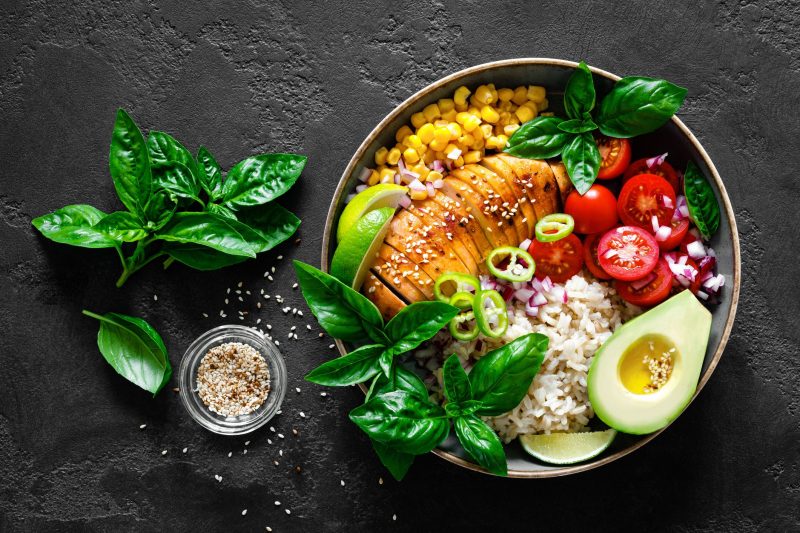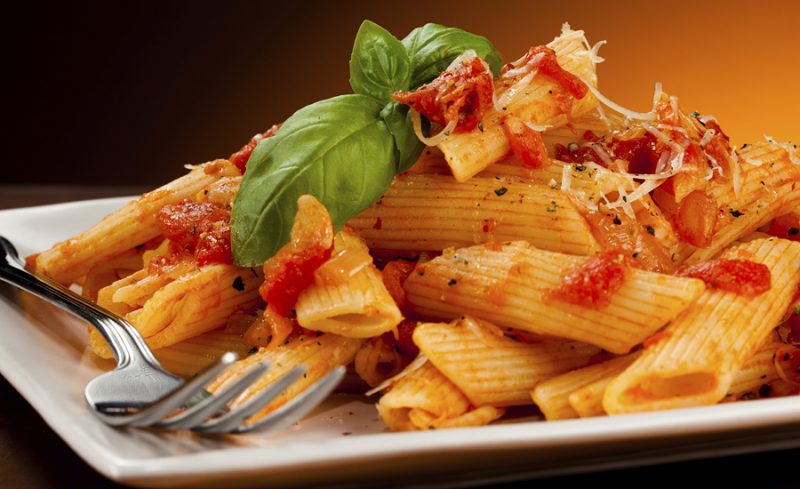Quick Answer: Yes, you can use marinara sauce on pizza. Marinara sauce is a simple tomato-based sauce that is often used on pasta, but it can also be used on pizza. It is typically made with tomatoes, garlic, olive oil, and herbs. Marinara sauce is thinner than traditional pizza sauce, but it has a bright, tangy flavor that complements the flavors of the pizza toppings.
Introduction
Picture this: a perfect pizza crust, golden and slightly crispy, topped with vibrant tomato sauce, bubbling cheese, and your favorite toppings. While traditional pizza sauce is the go-to choice, there’s a culinary twist that’s been sparking debate among pizza enthusiasts for years – using marinara sauce.
The Marinara Dilemma
When faced with the question of whether to use marinara sauce on pizza, the answer isn’t a simple yes or no. It’s an invitation to explore the realm of pizza creativity and taste experimentation.
The Flavorful Encounter
Marinara sauce, with its roots in Italian cuisine, is a vibrant tomato-based sauce, typically seasoned with garlic, basil, oregano, and olive oil. It’s celebrated for its fresh, tangy notes and the subtle kick of acidity that dances on your taste buds.
Traditionally, marinara sauce has been the star of pasta dishes, delivering an authentic Italian flavor profile. However, pizza is a different canvas, and some argue that this sauce can bring a whole new level of excitement to your pie.
The Versatility of Marinara
One of the alluring aspects of using marinara sauce on pizza is its versatility. It’s like giving your pizza a passport to explore a world of flavors. Marinara sauce pairs beautifully with a wide range of toppings, from classic mozzarella and basil to more unconventional choices like spicy sausage, grilled veggies, or even seafood.
Imagine the possibilities: a Margherita pizza with marinara, fresh mozzarella, and basil, or a spicy marinara veggie pizza featuring bell peppers, onions, jalapeños, and a hint of chili flakes. The options are as limitless as your culinary imagination.
A Touch of Italy
For those seeking an authentic Italian pizza experience, marinara sauce is a nod to tradition. It connects your pizza to its Mediterranean roots, offering a taste of Italy that’s hard to resist.
Nutritional Benefits
Beyond the taste, marinara sauce brings nutritional benefits to the table. Tomatoes, a primary ingredient in marinara, are rich in vitamins, antioxidants, and lycopene, making your pizza not only delicious but also nutritious.
So, can you use marinara sauce on pizza? Absolutely. It’s an invitation to embark on a flavorful journey, experiment with toppings, and celebrate the versatility of this Italian classic. In the next sections, we’ll explore how to make the most of marinara sauce on your pizza, address any potential challenges, and share some delicious recipes to inspire your culinary adventures.
Marinara Sauce vs. Pizza Sauce
If you’re scratching your head wondering about the differences between marinara and pizza sauce, you’re not alone. These two tomato-based concoctions often overlap in recipes, but they have distinct characteristics.
Marinara sauce, with its origins in Italian cuisine, is a tomato-based sauce that typically contains tomatoes, garlic, herbs (such as basil and oregano), and olive oil. It’s known for its fresh, bright flavors and a hint of acidity, making it a delightful companion for pasta dishes.
On the flip side, pizza sauce is crafted with pizza in mind. It’s often cooked and simmered to a thicker consistency, making it perfect for spreading over pizza dough. While it shares some ingredients with marinara, pizza sauce often includes a touch of sweetness and may have fewer herbs to allow the pizza’s other elements to shine.
Pros of Using Marinara Sauce on Pizza
Wondering why you should consider marinara sauce for your pizza? Here’s a list of the pros:
- Savory Flavor: Marinara sauce adds a savory, earthy flavor to your pizza that can be a delightful change from traditional pizza sauce.
- Versatile Pairing: It pairs exceptionally well with a wide range of toppings, making it versatile for creating your dream pizza.
- Authentic Italian Twist: If you’re craving an authentic Italian pizza experience, marinara sauce brings that traditional touch.
- Rich Nutrients: Tomatoes in marinara sauce provide a healthy dose of vitamins and antioxidants to your pizza.
Cons of Using Marinara Sauce on Pizza
While there are undeniable benefits to using marinara sauce on your pizza, it’s essential to consider the potential drawbacks and challenges:
- Texture Variation: Marinara sauce tends to be thinner compared to traditional pizza sauce. This can result in a somewhat different texture that may not be everyone’s preference.
- Moisture Content: The higher moisture content in marinara sauce can make the pizza crust soggy if not managed correctly during baking.
- Balancing Flavors: Marinara sauce can have a strong tomato flavor, which means you’ll need to strike the right balance with your toppings to avoid overpowering other ingredients.
- Cooking Time: Due to its thinner consistency, marinara sauce may cook faster than thicker pizza sauce, so you’ll need to adjust your cooking times accordingly.
Recipes for Pizza with Marinara Sauce
Ready to put your newfound knowledge to the test? Let’s dive into the fun part: creating delicious pizzas with marinara sauce. Here are some mouthwatering recipes to inspire your culinary journey:
| Recipe Name | Description |
|---|---|
| Margherita Marinara Pizza | Experience the classic simplicity of a Margherita pizza with marinara sauce, fresh mozzarella, basil, and a drizzle of olive oil. |
| Spicy Marinara Veggie Pizza | Spice things up with a veggie-loaded pizza featuring marinara sauce, bell peppers, onions, jalapeños, and a hint of chili flakes. |
| Mediterranean Seafood Pizza | Transport your taste buds to the Mediterranean with shrimp, calamari, and marinara sauce complemented by feta cheese and olives. |
Feel free to experiment with these recipes, customize the toppings, and make each pizza uniquely yours. The beauty of pizza-making lies in its versatility.
Conclusion
In this section, we’ve explored the nuances of using marinara sauce on pizza. You’ve learned the key differences between marinara and pizza sauce, discovered the pros and cons of choosing marinara, and even explored some tantalizing pizza recipes. Whether you’re a seasoned pizzaiolo or a budding home cook, marinara sauce can be your ticket to pizza paradise.
Frequently Asked Questions (FAQs)
Is marinara usually on pizza?
No, marinara sauce is not usually used on pizza. Traditional pizza sauce is thicker and has a richer flavor than marinara sauce. However, some people do like to use marinara sauce on pizza, and it can be a good option if you want a lighter-tasting pizza.
Is marinara sauce better than tomato sauce on pizza?
This is a matter of personal preference. Some people prefer the thinner, more acidic flavor of marinara sauce, while others prefer the thicker, richer flavor of traditional pizza sauce. Ultimately, the best way to decide which type of sauce you prefer is to try both and see which one you like better.
Is marinara sauce the same as tomato sauce?
No, marinara sauce and tomato sauce are not the same. Marinara sauce is a simple tomato-based sauce that is typically made with tomatoes, garlic, olive oil, and herbs. Tomato sauce is a more complex sauce that can be made with a variety of ingredients, including tomatoes, onions, garlic, herbs, spices, and sometimes cream or cheese.
Is marinara sweeter than tomato sauce?
No, marinara sauce is not typically sweeter than tomato sauce. Marinara sauce has a bright, tangy flavor, while tomato sauce can have a more savory flavor. However, some recipes for marinara sauce may call for adding sugar, which can give the sauce a slightly sweeter taste.
What does marinara sauce taste like?
Marinara sauce has a bright, tangy flavor that comes from the tomatoes. It also has a slightly sweet flavor from the herbs and spices.
Why is it called marinara sauce?
The name “marinara” comes from the Italian word “marinare,” which means “to marinate.” Marinara sauce was originally made by marinating tomatoes in olive oil, garlic, and herbs.
Does pizza sauce taste like marinara?
Yes, pizza sauce and marinara sauce are similar in flavor. However, pizza sauce is typically thicker and has a richer flavor than marinara sauce. This is because pizza sauce is often cooked for a longer period of time, which allows the flavors to develop more.
How do you thicken marinara sauce for pizza?
There are a few ways to thicken marinara sauce for pizza. One way is to simmer the sauce for a longer period of time. This will allow the water to evaporate and the sauce to thicken. Another way to thicken marinara sauce is to add tomato paste. Tomato paste is a concentrated form of tomatoes that will add thickness and flavor to the sauce.
Is marinara sauce for pasta or pizza?
Marinara sauce can be used for both pasta and pizza. It is a versatile sauce that can be enjoyed in many different ways.
Is marinara sauce thick or thin?
Marinara sauce is typically thin. However, there are some recipes for marinara sauce that call for adding tomato paste, which can thicken the sauce.
Should You Be Using Marinara Sauce for Pizza?
Ah, the million-dollar question! The short answer: absolutely. Marinara sauce can breathe new life into your pizza adventures, introducing bold flavors and a touch of Italian authenticity. It’s a choice that opens up a world of culinary possibilities. The secret lies in how you wield it. Later in this guide, I’ll share tips and tricks to ensure marinara sauce shines on your pizza.
Can You Substitute Marinara Sauce for Pizza Sauce?
In most cases, yes! While pizza sauce is tailored for the job, you can often swap it out for marinara sauce without sacrificing flavor. However, there are a few points to consider: marinara sauce is thinner, so you may need to adjust your baking time and topping combinations. The sweetness in some pizza sauces may differ from the tang of marinara. Remember, the beauty of pizza lies in experimentation. Give it a whirl and see what you create!
What Are the Best Toppings to Pair with Marinara Sauce on Pizza?
Marinara sauce is incredibly versatile when it comes to toppings. Some classic choices include fresh mozzarella, basil leaves, pepperoni, and mushrooms. However, don’t shy away from creative pairings like prosciutto and arugula, or goat cheese and caramelized onions. The balance of flavors is key, so let your taste buds guide you.
Is marinara sauce eaten hot or cold?
Marinara sauce is typically eaten hot. However, it can also be eaten cold, such as in a salad.
How do you eat marinara sauce?
Marinara sauce can be eaten in many different ways. It is often used as a dipping sauce for breadsticks or other appetizers. It can also be used as a topping for pasta, pizza, or other dishes.
Is marinara sauce better than pasta sauce?
This is a matter of personal preference. Some people prefer the thinner, more acidic flavor of marinara sauce, while others prefer the thicker, richer flavor of pasta sauce. Ultimately, the best way to decide which type of sauce you prefer is to try both and see which one you like better.
Can you burn marinara sauce?
Yes, you can burn marinara sauce. If you simmer the sauce for too long, it can become thick and bitter. To avoid burning marinara sauce, simmer it for a shorter period of time and stir it frequently.
Should marinara sauce be cooked?
Yes, marinara sauce should be cooked. This will allow the flavors to develop and the sauce to thicken. However, you should not overcook the sauce, as this can make it


